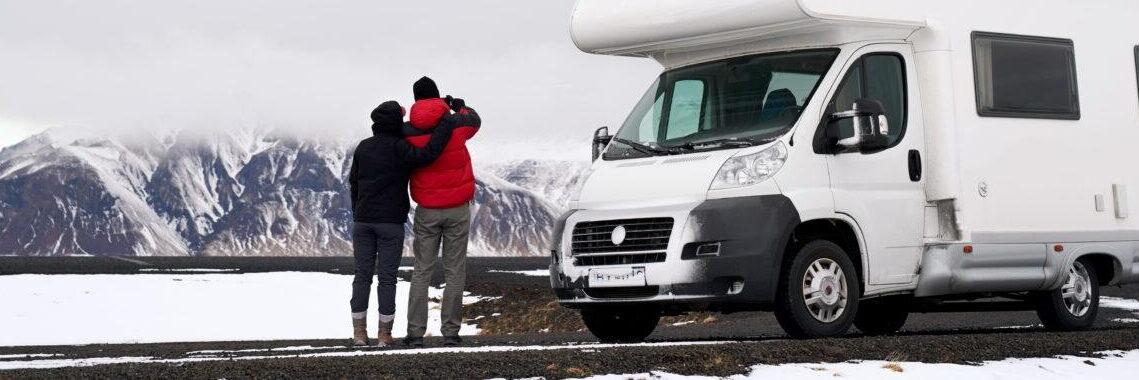
Iceland’s small size makes getting around the country pretty easy, at least from spring to autumn. From Reykjavik, you can fly or take a bus to all major centers, and in the summer, there are even regular buses to the highlands. However, bus connections are limited in winter, and difficult road conditions can make flying the only convenient way to get around. It is also reasonably easy to rent a car, camper van, or 4×4 vehicle in Iceland.
On land, you will likely spend a lot of time on Route 1, a ring road that mainly follows the coast on a 1,500 km route around the country through Reykjavik, Akureyri, Egilsstadir, and Hofn. Roads around towns are paved, but many Icelandic gravel roads remain. While many of them are available for all vehicles, some – for example, most of the roads in the island’s interior are only accessible to 4×4 vehicles with high ground clearance.
By Air
Flights in Iceland are good value for money: for example, the cheapest plane ticket from Reykjavik to Egilsstadir is more affordable than a bus ticket for the same trip and only takes one hour. As a bonus, you’ll get a bird’s eye view of Iceland’s unique landscape: flying over the vast ice expanse of Vatnajokull is the only way to appreciate its scale. A popular destination for flights from Reykjavik to Akureyri, the second-largest city in Iceland, where you can conveniently visit north. The flight to Akureyri takes only 45 minutes. You can explore the surrounding area of Akureyri in one day and return to Reykjavik or stay overnight at Lake Myvatn to better explore the local attractions.
The leading domestic airline, Air Iceland Connect, flies year-round from Reykjavik to Akureyri, Egilsstadir, Westman Islands, and Isafjordur. From April to October, it flies to Grimsey Island, Vopnafjordur, and Torshofn. Eagle Air also operates flights from Reykjavik to Westman Islands, Hornafjordur, and Husavik. Please note that bad weather can result in short cancellation times and that it is best to book in advance for summer weekends and holidays. The baggage allowance is 20 kg, a check-in is thirty minutes before departure.
By Bus
Four bus companies provide regular intercity services in Iceland. Three of them are located in Reykjavik: Reykjavík Excursions, Sterna, Straeto. SBA-Nordurleið and Sterna perform some routes to the north of the country. Together, these companies cover the entire Ring Road, Westfjords, local trails in the North-East, and summer routes in the interior part of the island. One more operator, Trex, operates from Reykjavik to the Thorsmork valley in summer. Traveling by bus is convenient but expensive. Simply put, it is cheaper to fly, and if you are traveling in a group, renting a car may be cheaper, depending on how far you are going and for how long. From autumn to spring, the number of buses is significantly reduced: internal roads are closed, local services are canceled, and even along the Ring Road, there is no bus service remaining between Egilsstadir and Hofn in East Iceland.
Many bus companies also offer year-round Golden Circle tours and inland trips in summer. Domestic routes operated by bus tours from Reykjavik include the Fjallabak area, Landmannalaugar to Skaftafell via the Eldgja wild gorge system, and a cross-country journey to Lake Myvatn, either along the impressively sterile Sprengisandur route or the more accessible and slightly more scenic Kjolur route. Local tours include a trip to the mighty Askja caldera south of Myvatn; and Lakigigar, a region of a massive eruption of the eighteenth century in the country’s south.
By Car
In Iceland, car rental agencies have offices in many townships offering everything from small, fuel-efficient compact cars to camper vans, RVs, and 4x4s. Rental options can be of two types: a daily rate covering the first 100 km, after which you pay for additional kilometers, or an all-inclusive rate with unlimited mileage. There is an additional haulage fee for one-way rentals (for example, picking up the car in Reykjavik and leaving in Akureyri). Additional charges cover windshield damage, gravel damage, and how much CDW (Collision Damage Waiver) you will be responsible for; collectively, they can sometimes double the daily rental price. Rental rates are highest between June and August, so it is best to book online in advance.
During summertime, you can often see tourists traveling around Iceland with their vehicles (cars with foreign license plates). These tourists usually take the Norrona car ferry to Iceland, from Denmark to the Seydisfjordur village in the East Fjords.
Tours and Excursions
Wherever you go in Iceland, you will find tours on offer, ranging from whale watching boat trips, hiking, horse riding, or snowmobiling tours on a glacier to classic sightseeing bus tours or even sightseeing flights. Some routes, such as the famous Golden Circle, are easy to do on your own, while others are the only practical way to get to some local attractions. Tours can last from a few hours to several days, and the most range of activities is offered between June and September. Booking in advance is usually recommended.
The wintertime or low tourist season lasts from October to May; during this period, some of the operators are suspending their activities, while those that remain open focus on offering Northern Lights tours, four-wheel-drive tours, and visits to glacial caves. The interior of the island is closed for travel at that time. While the larger operators in Reykjavik offer travel in winter almost daily, most of them will need a few days in booking to organize your trip.
Self-driving tours are the ideal choice if you plan a more independent holiday, taking advantage of our experience and support during your tour preparation and stay in Iceland.
Excursions with a private guide
Are you looking for an exclusive first-class experience? Top Iceland Tours offers carefully curated private itineraries. Our staff will select the most comfortable apartments in the country and provide a suitable car for a relaxing trip.
